Totem Bight State Park is located in Ketchikan Alaska. It is one of the top tourist destinations in Ketchikan, especially from the large number of cruise ship passengers they receive each summer.
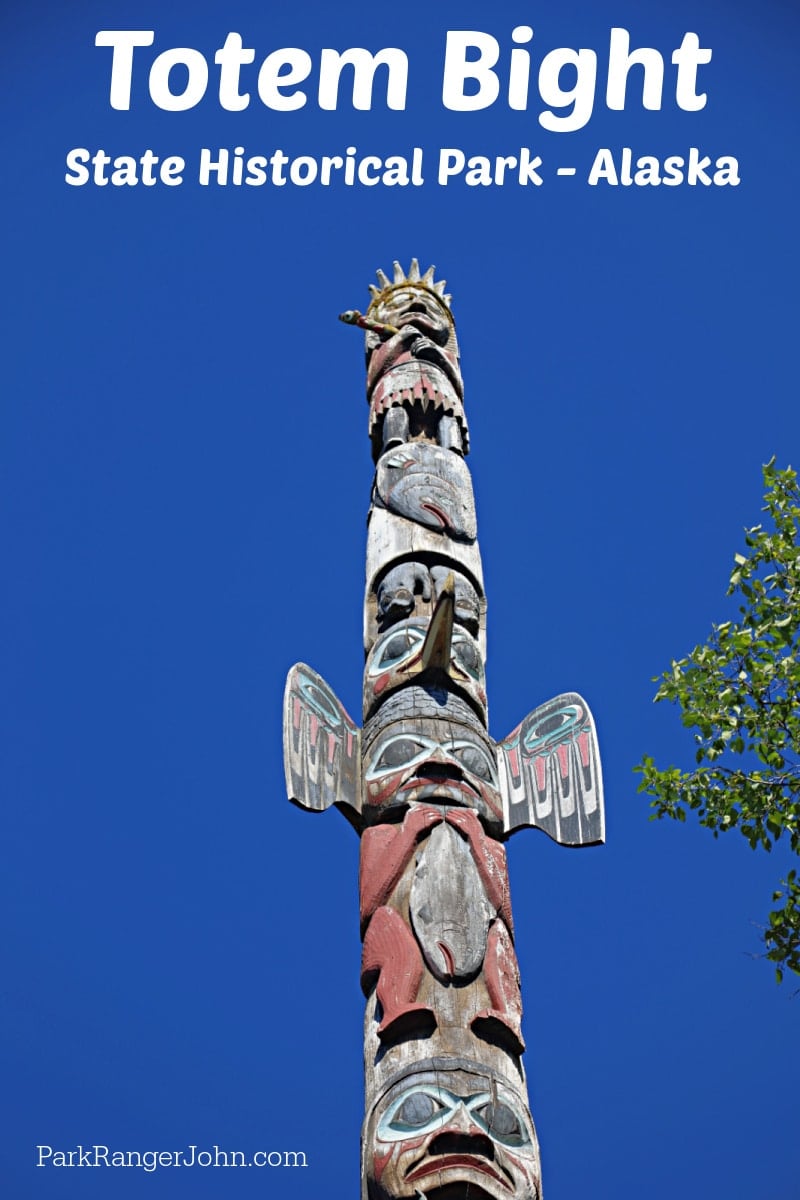
Totem Bight State Park
Totem Bight State Historical Park stands as a testament to the rich cultural heritage of the indigenous peoples of the area.
The State Park occupies land that was once a Native Alaskan campground called Mud Bight Village.
Established in 1938, this park encompasses 33 acres and is renowned for its collection of intricately carved totem poles, a traditional native Alaskan structure, and breathtaking natural scenery.
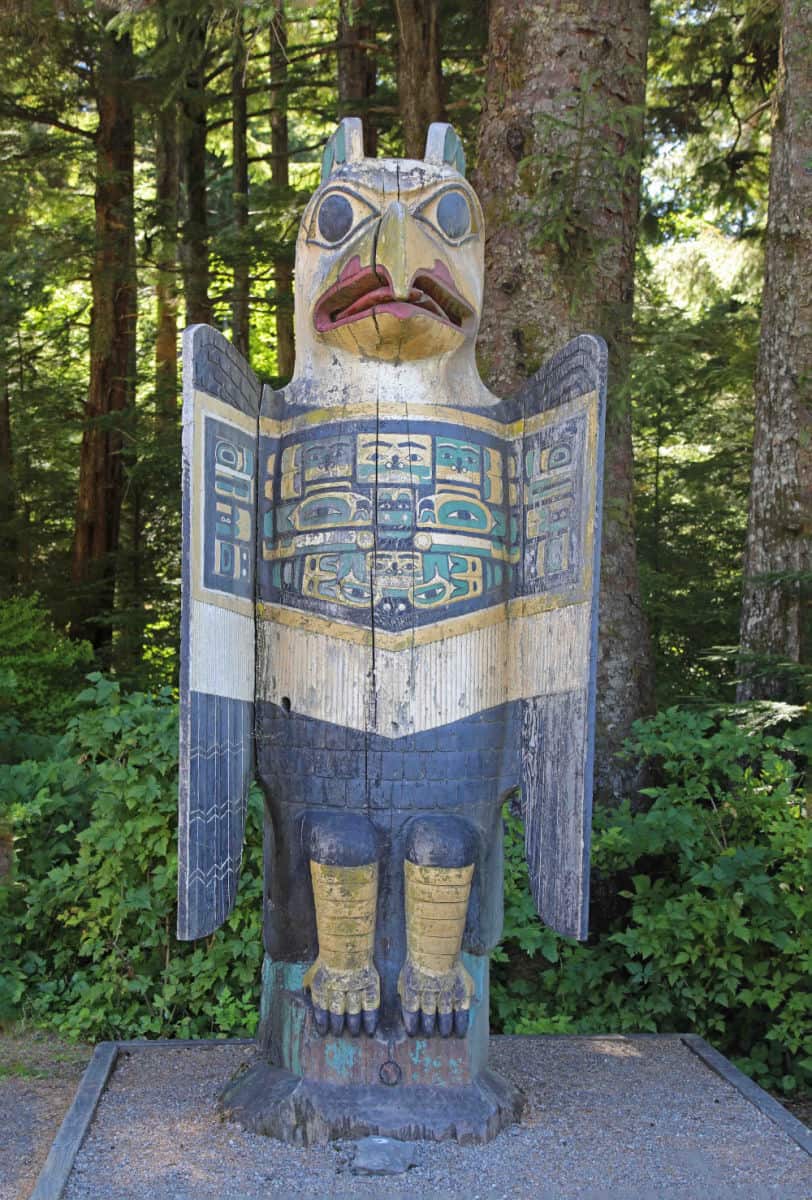
Totem Bight State Park History
In the early 1900s, native villages were on the decline as people moved towards cities for work. Small villages were left abandoned and the weather of Southeast Alaska was quickly eroding these sites.
Much of Southeast Alaska is a temperate rainforest and Ketchikan receives approximately five times the average rainfall the rest of the state receives, up to 160 inches a year!
In 1938. the U.S. Forest Service began salvaging sites like Totem Bight through the Civilian Conservation Corps (CCC).
This program hired skilled carvers from a small group of older natives as well as some younger artisans to carry the tradition forward.
Native carvers tried to copy the poles as much as possible, used original tools for carving totem poles, as well as using natural materials for the project.
By the end of World War 2, they had managed to duplicate 15 Totem Poles and the Clan House (Community House).
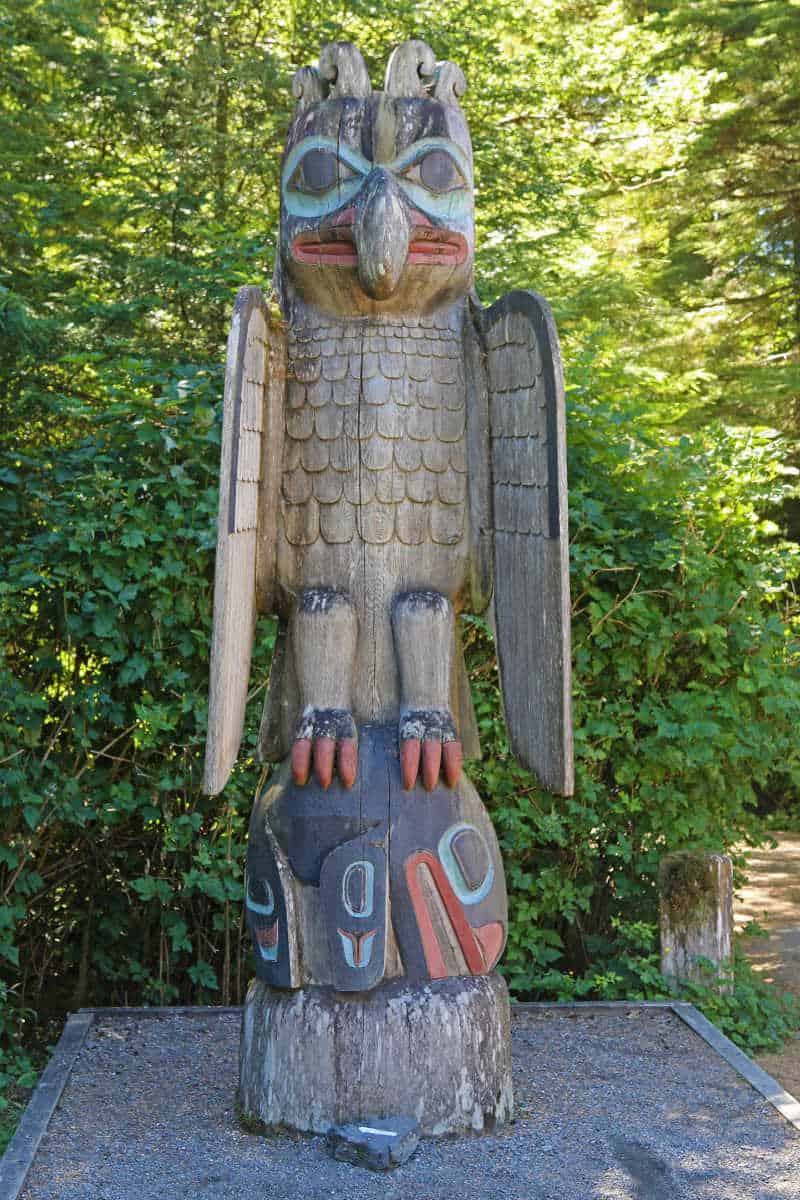
The History and Meaning of Totem Poles
Totem poles are carved, painted logs that are mounted in the ground, that were created by the Native cultures of the Northwest coast of America. The tradition is believed to have started in the early 1700s. These impressive carvings are typically fashioned from large cedar trees and serve as important cultural expressions.
Totem poles are characterized by their towering height, intricate carvings, and rich symbolism, conveying a variety of cultural narratives. They represent the ancestors, culture, and history of the Native tribe that carved them.
There are 6 different types of totem poles. These are interior house posts, house frontal posts, memorial poles, shame poles, mortuary poles, and welcome poles.
Totem poles can be used to welcome people to the tribe's village or Clan house, tell the story of the clan, and commemorate the dead. Shame poles, as the name would suggest, are carved to shame an individual or group who did something wrong.
Totem poles are usually carved and painted to depict animals and spirits. The totem poles found within Totem Bight State Historical Park tell the story of the people who once used Mud Bight Village as a campground.
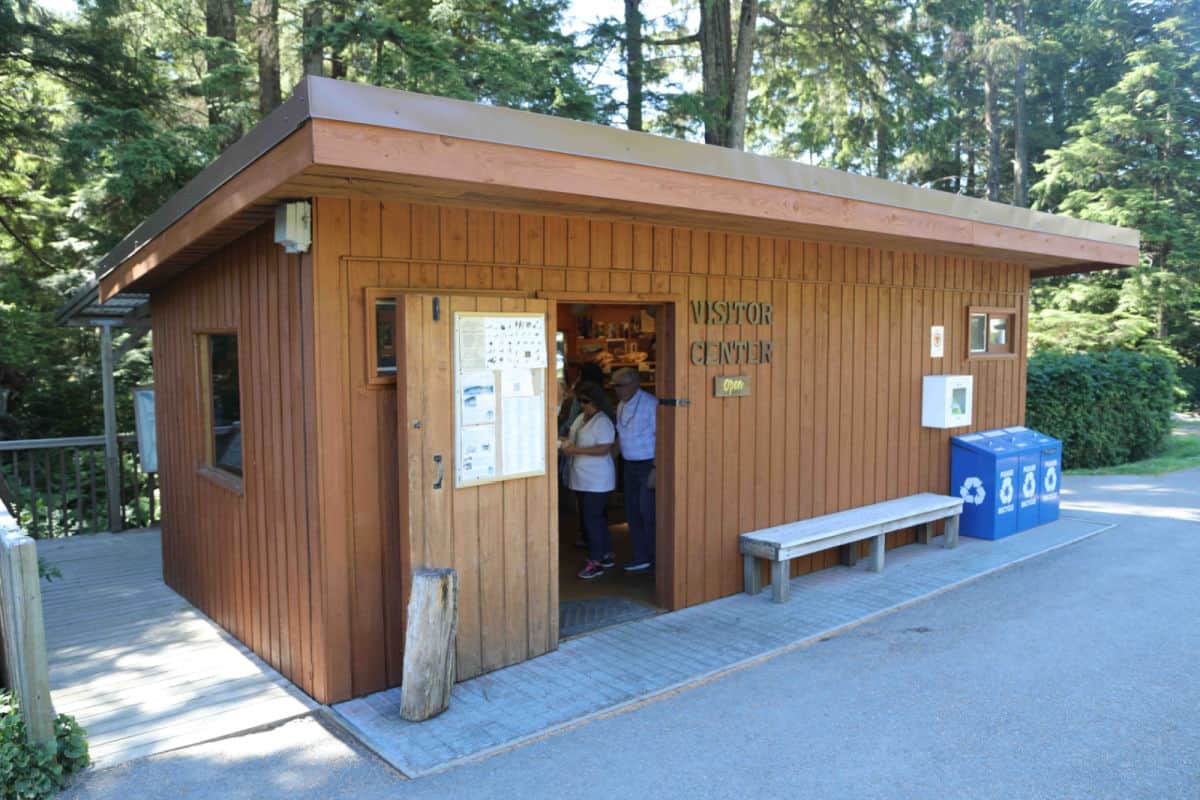
The People of Totem Bight State Historical Park
The site that is now Totem Bight State Historical Park was once the home to the Tlingit people, although the land is tied to the Haida people too. The Tlingit and Haida people have been intrinsically linked for thousands of years, a relationship which continues to this day.
The Tlingit people, whose name means ‘People of the Tides’, are believed to have inhabited the region for roughly 11,000 years, originating from either Polynesia or the Bering Strait. They initially lived a hunter-gatherer lifestyle, roaming the region hunting, fishing, and gathering roots and berries.
The Tlingit used the large red cedar wood trunks to create canoes up to 60 ft in length. They used the canoes to traverse the waterways of the area to fish, and eventually trade. Along with the Haida people, the Tlingit had close relations with the neighboring Tsimshian tribe.
The Tlingit people spent their leisure time honing the art of totem pole carving and decorating, using the cedar wood trees to create their impressive monuments.
In the early 1900s, the people who lived in Mud Bight Village were forced to abandon it in order to seek employment in the larger cities and towns. This was due to the development of white settlements in the region, which led to a decline in the barter economy that the Tlingit relied upon.
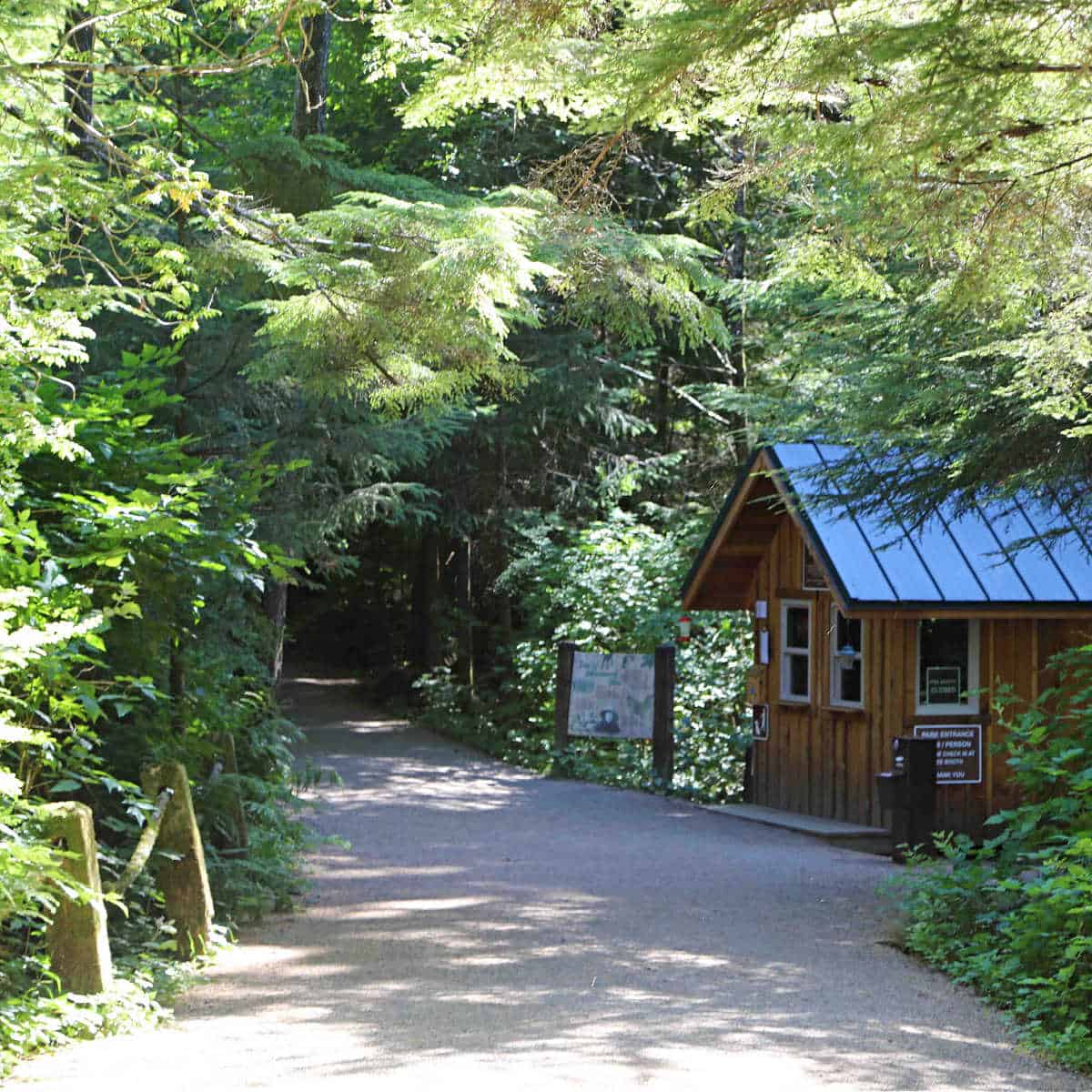
Creating Totem Bight State Historical Park
When Mud Bight Village was abandoned, it was left to the elements, which eroded the totem poles. The village itself was soon reclaimed by the forest. In 1938, the U.S. Forest Service started a program that aimed to restore villages such as Mud Bight.
The U.S. Forest Service used funds from the Civilian Conservation Corps or the CCC to hire skilled Tlingit and Haida carvers to restore the totem poles left behind.
The totem poles that were too degraded to be salvaged were replaced with replicas. The totem poles were recreated using tools made by hand, and paints created from natural resources, which were then replicated using modern paints.
The plan with Mud Bight State Historical Park was to recreate a traditional village, and so a replica of a Clan house was built on the site. The Clan house would have been able to house between 30-50 people and was built in the traditional design of the Tlingit and Haida.
Outside of the Clan house visitors can see an example of a house frontal totem pole. These types of totem poles are the most intricately carved and decorated, as they tell the story of the family or clan.
By the time America entered into World War II, 15 totem poles had been restored or replicated, along with the Clan house. It was at this time that the site was named Totem Bight.
The land was under the control of the Federal Government until 1959 when Alaska achieved statehood. The title was then passed to the State of Alaska and was added to the National Register of Historic Places in 1970.
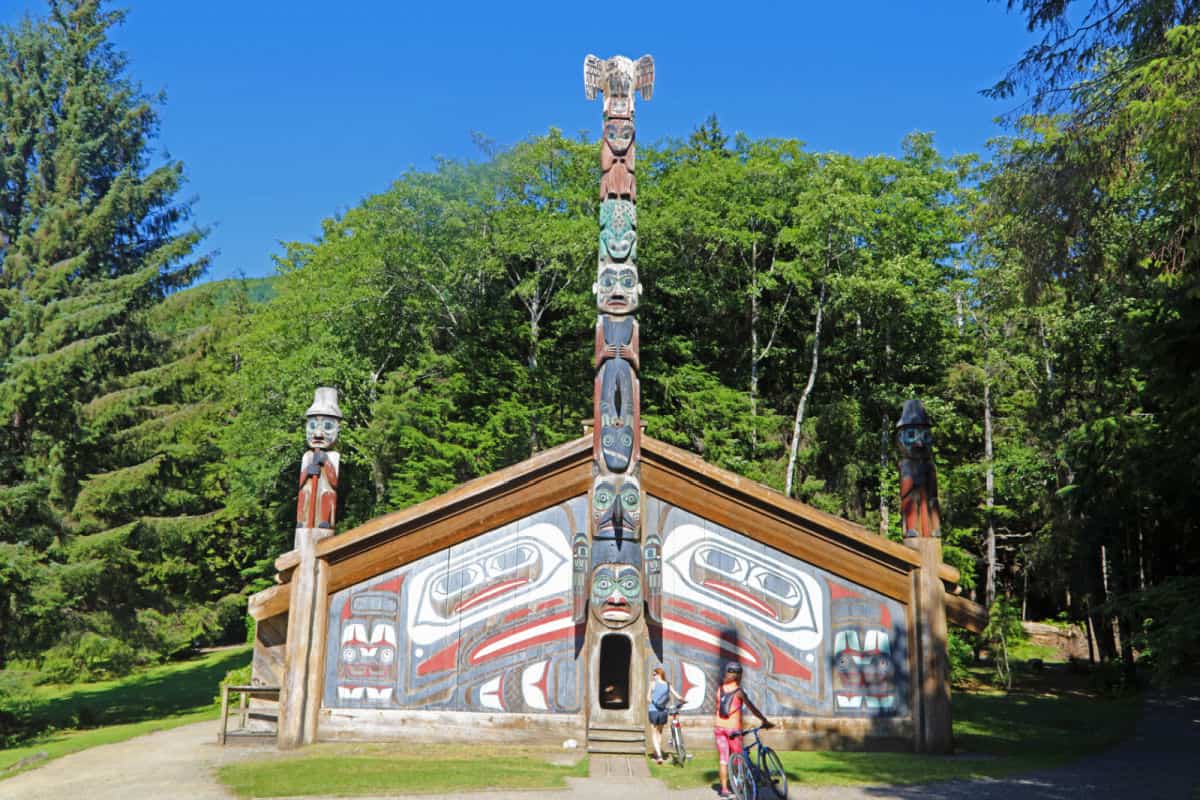
The Clan House
The Clan House at Totem Bight State Historical Park is representative of what you would have found in Tlingit or Haida villages built in the early 19th century.
The Clan House was built to hold 30-50 people. They served as the living quarters for several families of a specific lineage.
The families had their own area but would share a central fire.
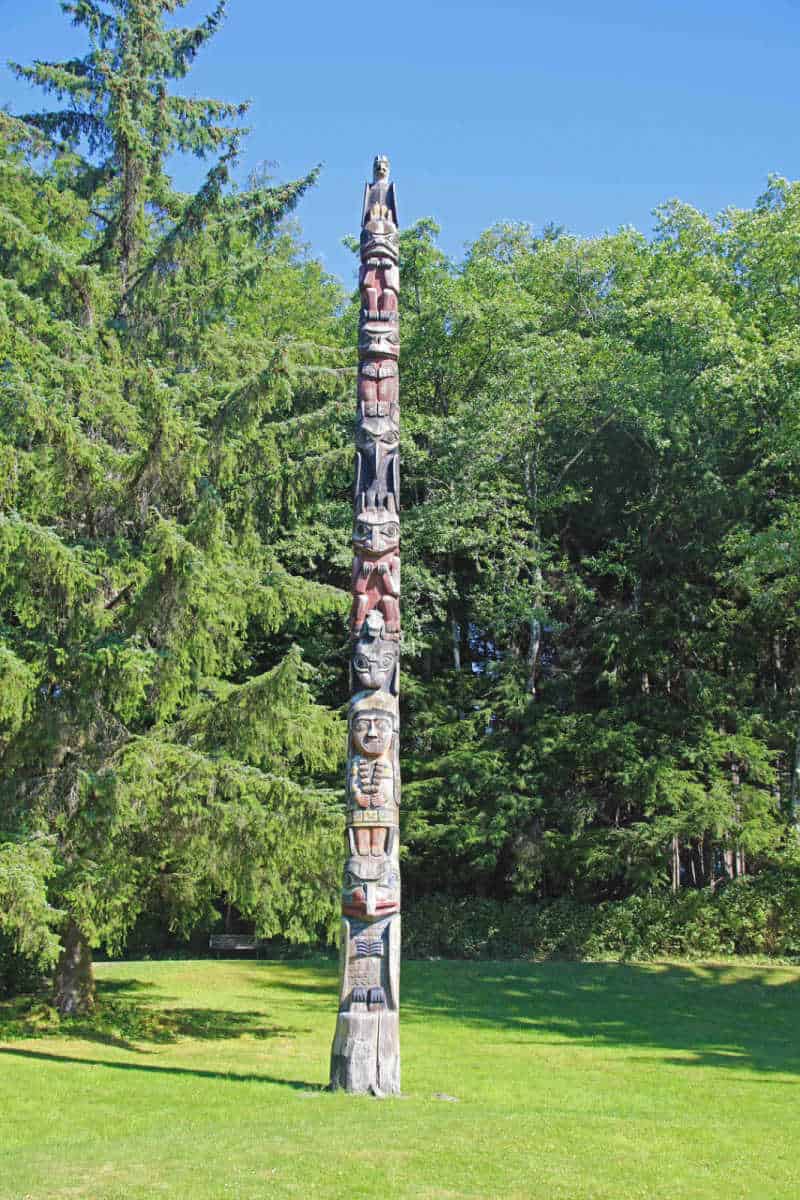
Totem Bight State Park Information
Totem Bight State Historical Park is a 33-acre day-use park with a visitor center that is open in the summer.
Entrance Fee - Totem Bight has a $5/person entry fee between May 1-September 30. There is no admission in the off-season between October 1-April 30.
Park Hours - The park is open year-round from 7:00 am-6:00 pm
Park Address - 9883 N Tongass Hwy, Ketchikan, AK 99901
Phone Number - (907) 247-8574
ADA Accessible - Yes
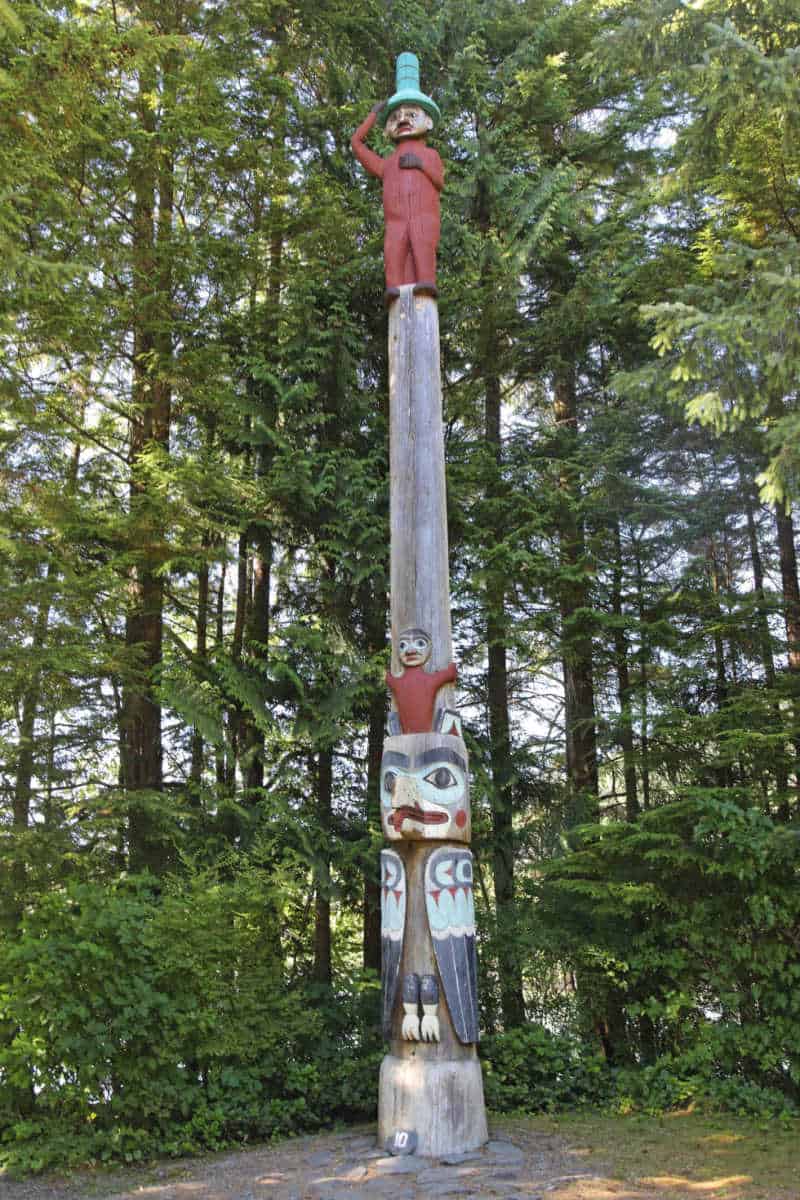
Outdoor Recreation activities include hiking, picnicking, exploring the grounds, and the native american totem poles. The Clan House is the central attraction at the park and offers a look into Native Alaska culture and history
The park features a one-way ADA-accessible trail that leads you to see 14 totem poles and a clan house.
Totem Bight State Historical Park was added to the National Register of Historic Places in 1970.
Visitors have the opportunity to walk along a one-way guided path that leads you past 14 totem poles.
Make sure to grab a visitor guide that explains the history of each pole and the clan house. Each of these poles is a replica of poles that were found in villages within Alaska.
One thing to be prepared for always in Alaska is changing weather. You will want to dress in layers since the park is along the water.
Ketchikan is known for getting rain year-round. The temperature in Ketchikan rarely reaches above 72 degrees.
You may hear Totem Bight also called the Alaska Totem Pole Park.
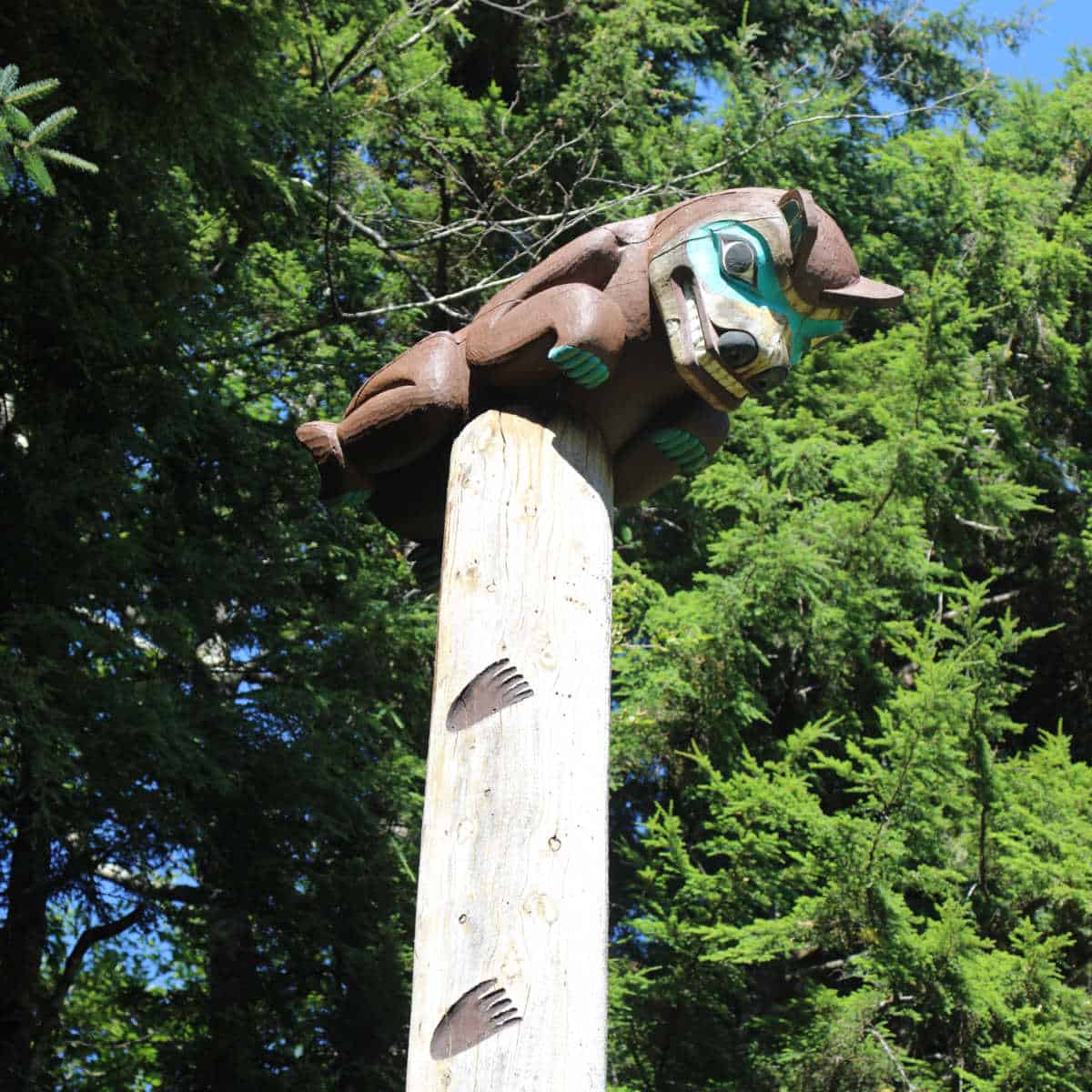
How to get to Totem Bight State Park
Airport: Ketchikan International Airport is approximately 20 minutes, 9 miles from Totem Bight.
Driving from Ketchikan, Alaska: From Ketchikan, take Alaska Highway 7 (Also known as the North Tongass Highway) north straight to the park.
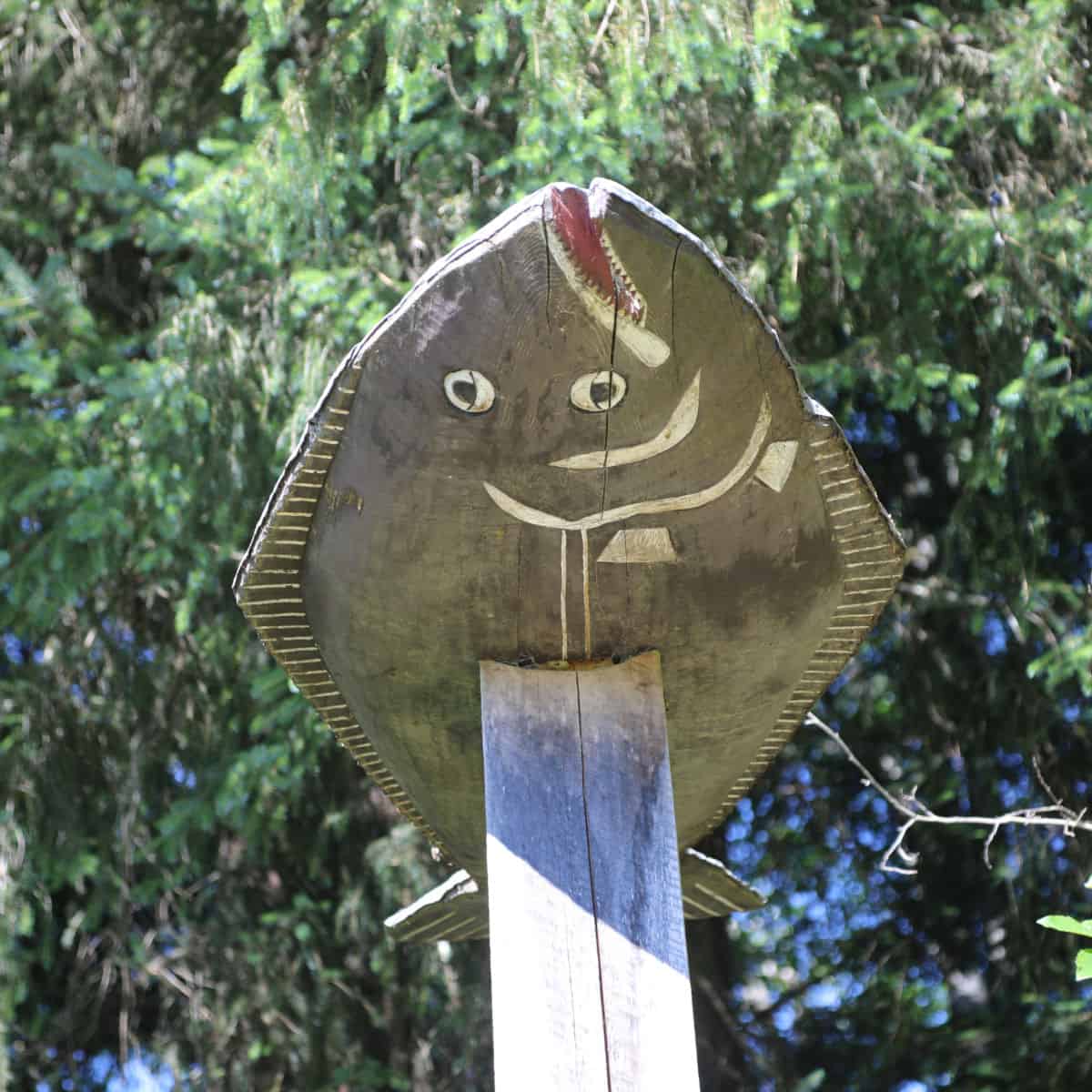
Public Transportation: Ketchican bus to Totem Bight State Park
Ketchikan has public transportation and does provide transportation to/from the cruise docks to Totem Bight State Park.
I would highly suggest that if you plan on taking this option to know the bus schedule and give yourself plenty of time as most cruise ships only stay a short time (Typically 4 hours) in port and you don't want to miss your cruise ship.
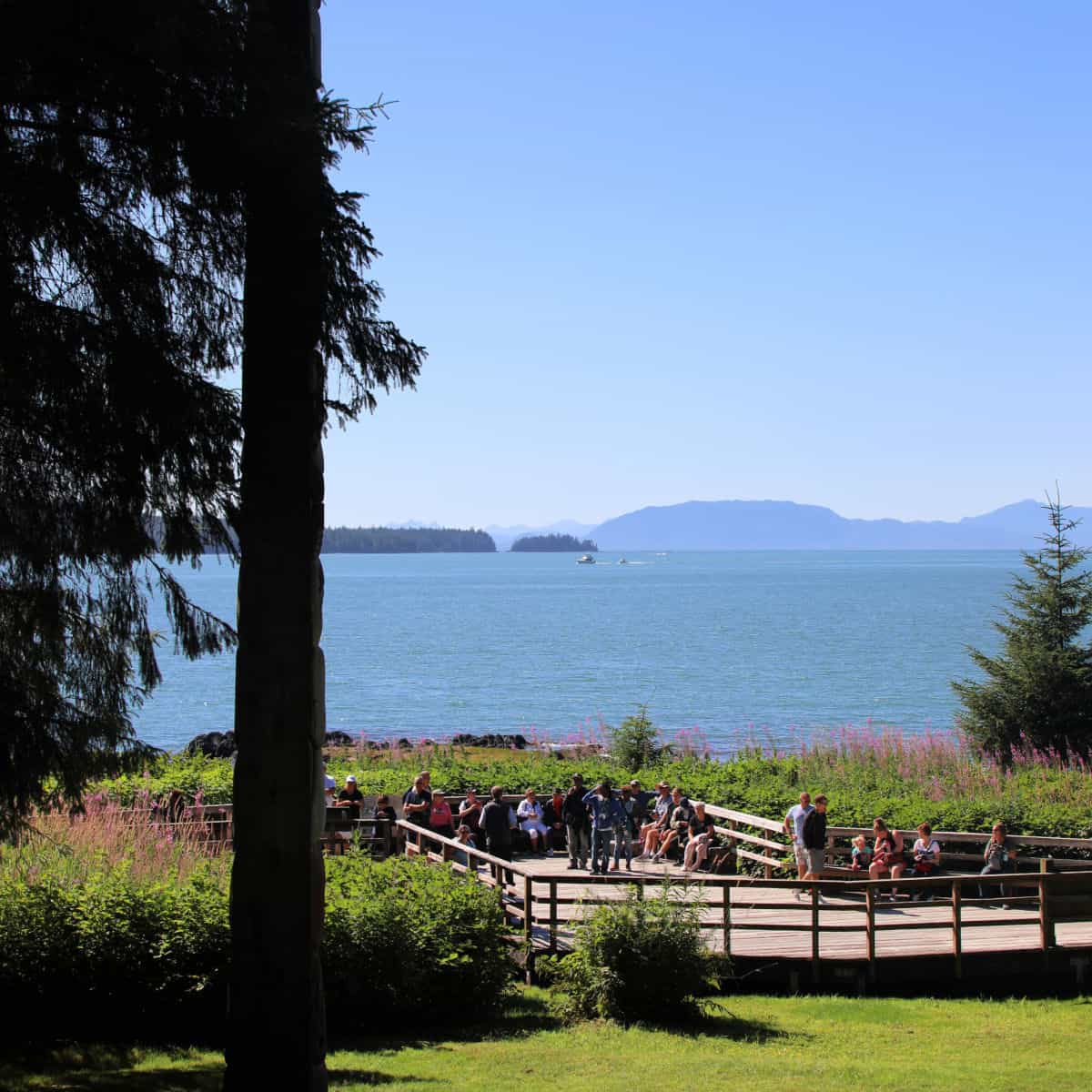
Visiting Totem Bight State Park from Cruise Ship Excursion
If you are taking an Alaska Inside Passage cruise, odds are your ship will make a stop in Ketchikan.
It is a very busy port and is not uncommon to see more than one ship at a time in port.
Cruise ship excursions make visiting Totem Bight simple. Simply buy your excursion tickets then meet at your designated time and location.
You and your group will board a bus just outside the cruise ship.
The bus will go through town and show a few highlights to Ketchikan including the totem that is on one of the pages of the United States Passport before taking you north for a short drive (approximately 15-20. minutes) to Totem Bight State Park.
The bus stops in front of a gift shop with restrooms and the park entrance is just around the corner.
You will have time here to look at a couple of totems at the entrance of the park while the bus driver goes and gets the entrance tickets for everyone on the bus.
You will be then led to the entrance of the park and hike down a nice trail.
You will be given time to walk around to see all the totem poles and check out the clan house.
There are also several benches to sit down and enjoy the views.
After visiting the park, you will have time to wander the gift shop and use the restroom before heading back to town.
I recommend this restroom break and then you can go explore downtown Ketchikan when you get back.
Ketchikan is small and easy to navigate.
If you feel lost, just look up and you will find your cruise ship! LOL and yes Ketchikan is that small!
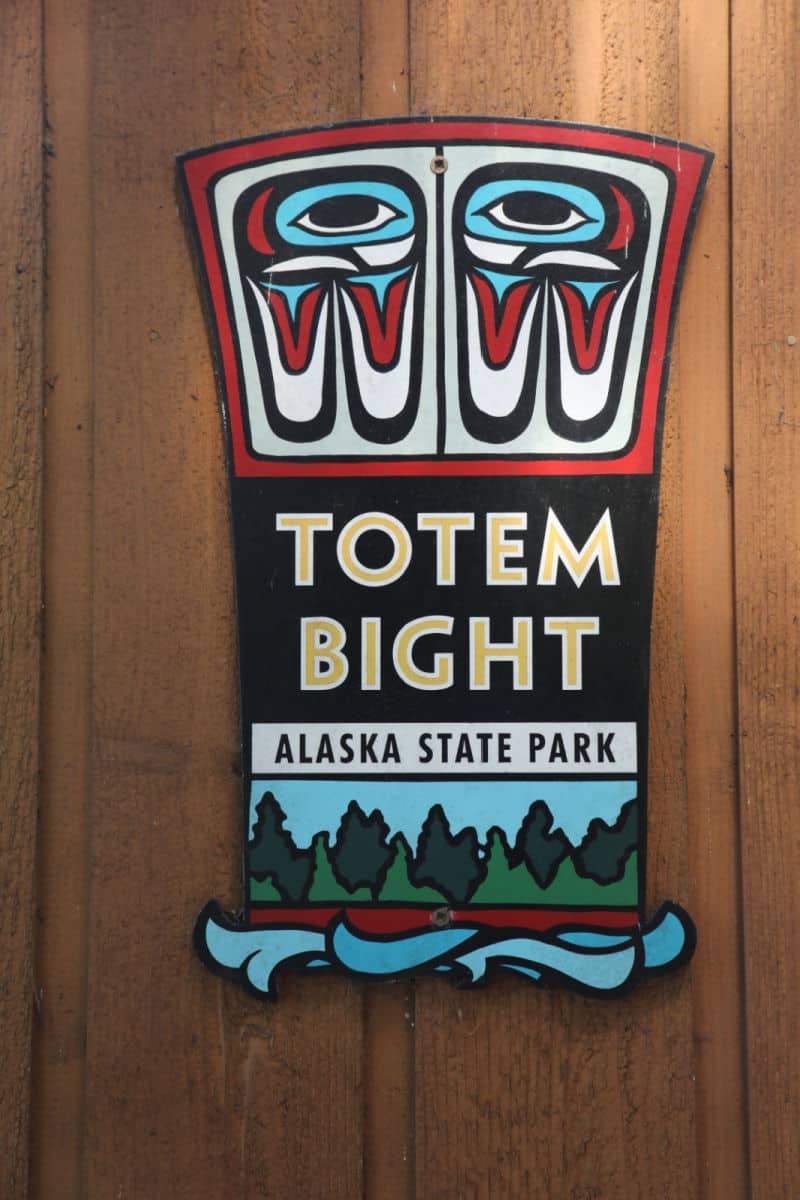
Cruise ships also sell Totem Bight State Park and lumberjack show combo tickets.
If you like cheeky fun things, I would also recommend the Great Alaskan Lumberjack Show.
Everyone from little kids to senior citizens gets excited to cheer on their teams, half of which are rooting for the Canadians and the other half cheering on the Americans in a fun game of timber sports.
It is educational, fun, humorous, and guaranteed that you will leave here smiling!
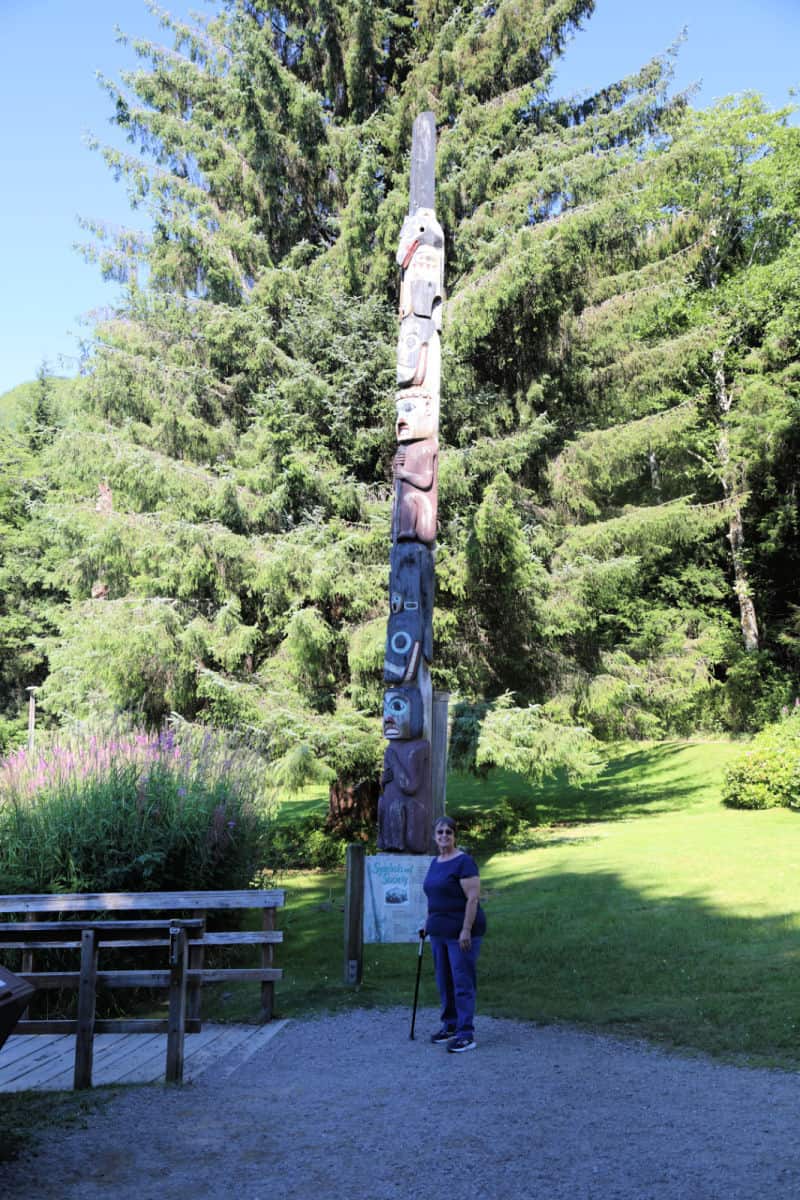
Exploring Ketchikan
Make sure to check out the city park in Ketchikan. It is a culturally rich park with outdoor totem poles!
Also, make sure to check out Ketchikan Creek as it runs right through the city park! Keep your eyes peeled, yo may just see fish swim by. The Totem Heritage Center is also located in the park
Park Ranger John Pro Tip:
If You are heading south from Ketchikan on a cruise ship, make sure to keep an eye out for whales! Shortly after your cruise ship heads out of the port in Ketchikan,
Your cruise ship will be leaving the inside passage and its protected waters and back into the Pacific Ocean. This area tends to be rich in nutrients and makes a great location to see Humpback Whales.
I saw more whales here than anywhere else on our week-long cruise.
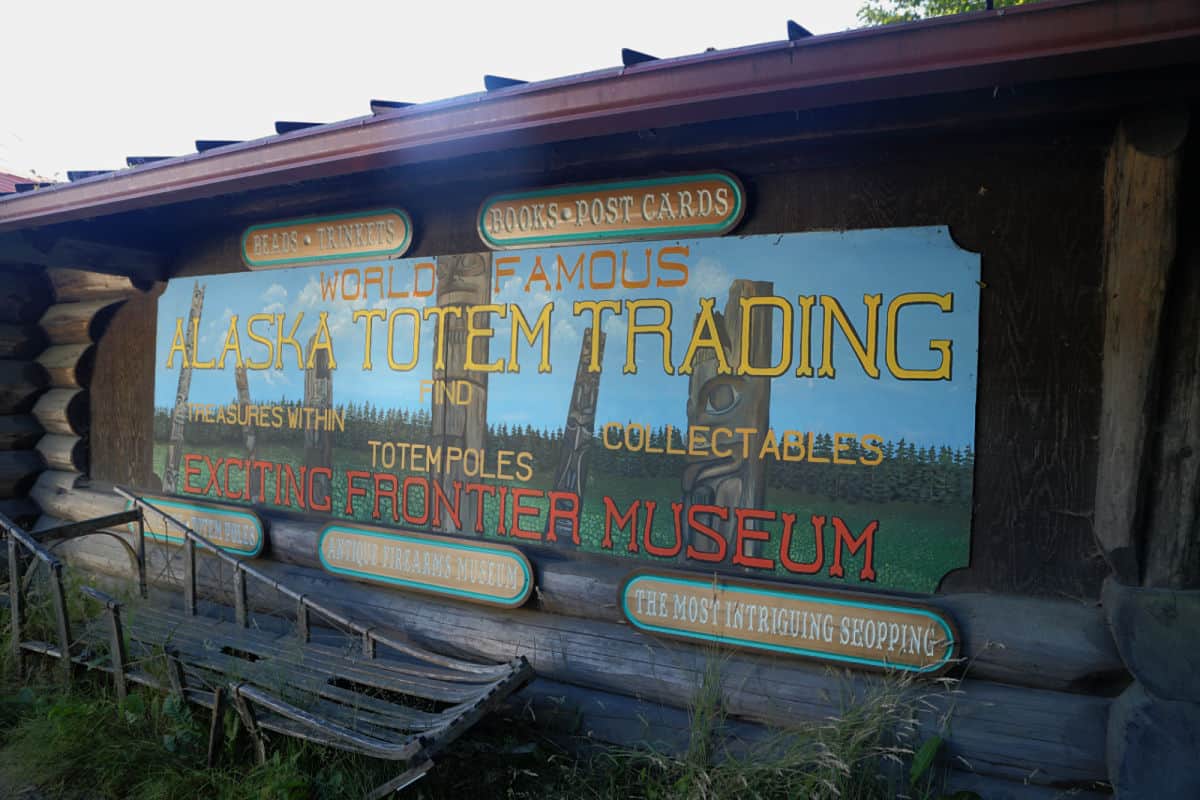
Alaska Cruise Information
Top things to do in Ketchikan Alaska on a cruise
The Great Alaskan Lumberjack Show
Cruising to America's National Parks- Alaska Ports of Call
Things to do in Skagway Alaska
Bear Watching in Haines, Alaska
Additional National Parks in Alaska
Wrangell St Elias National Park
Klondike Gold Rush National Historical Park
Check out all of the amazing Alaska National Parks along with Washington National Parks, California National Parks, and Hawaii National Parks.
Make sure to follow Park Ranger John on Facebook, Instagram, Pinterest, and TikTok

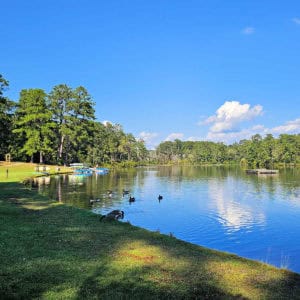
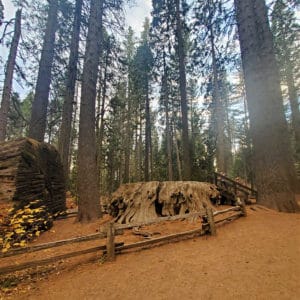
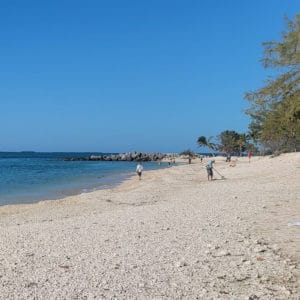
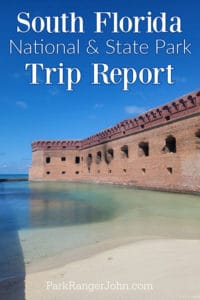
Leave a Reply